
Alan de Plugenet, 2nd Baron Plugenet (died 1319), Lord of Preston Plucknett was an English noble. He served in English campaigns in Scotland.

Alan de Plugenet, 2nd Baron Plugenet (died 1319), Lord of Preston Plucknett was an English noble. He served in English campaigns in Scotland.
Alan was the son of Alen de Plugenet [1] and Joan. He served in Scotland in 1300, 1301 and 1303, and was knighted in 1306. He again served in the Scottish wars from 1309 to 1311, from 1313 to 1317, and in 1319. Alan was summoned to parliament in 1311. [2] Plugenet died in 1319, and was buried at Dore Abbey. He left no issue by his wife Sybil, who in 1327 remarried Henry de Pembridge. She died in 1353. His sister Joan was his heir. [3] [4]

Baron Kingsale is a title of the premier baron in the Peerage of Ireland. The feudal barony dates to at least the thirteenth century. The first peerage creation was by writ.
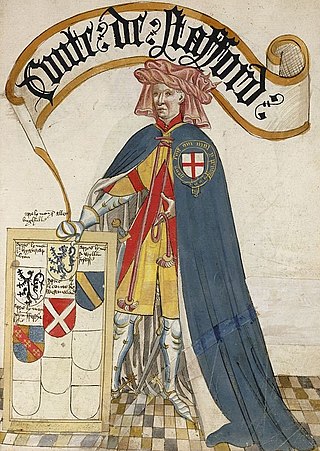
Ralph de Stafford, 1st Earl of Stafford, 2nd Baron Stafford, KG, of Stafford Castle and Madeley Castle in Staffordshire, was an English nobleman and a notable soldier during the Hundred Years' War against France.

Lieutenant-General Charles Butler, 1st Earl of Arran, de jure3rd Duke of Ormonde (1671–1758) was an Anglo-Irish peer. His uncle Richard was the 1st Earl of Arran of the first creation. The titles were re-created for Charles in 1693. His elder brother, the 2nd Duke of Ormonde, was attainted during the Jacobite rising of 1715, but in 1721 Arran was allowed to buy the estate back. At the death of the 2nd Duke, he succeeded as de jure 3rd Duke of Ormonde in the Irish peerage but did not claim the title.

William de Beauchamp, 1st Baron Bergavenny, KG was an English peer.
George Neville, 1st Baron Latimer or (Latymer) was an English nobleman.
Margaret de Audley,suo jure2nd Baroness Audley and Countess of Stafford was an English noblewoman. She was the only daughter of Hugh de Audley, 1st Earl of Gloucester, by his wife Lady Margaret de Clare. Her mother was the daughter of Joan of Acre, Princess of England; thus making Margaret a great-granddaughter of King Edward I by his first consort, Eleanor of Castile. As the only daughter and heiress of her father, she succeeded to the title of 2nd Baroness Audley [E., 1317] on 10 November 1347.

Elizabeth Willoughby, 3rd Baroness Willoughby de Broke, de jure 11th Baroness Latimer was an English noblewoman and wife of Sir Fulke Greville.

Robert Bourchier, 1st Baron Bourchier was Lord Chancellor of England, the first layman to hold the post.

Thomas Burgh, 3rd Baron Burgh KG 3rd Baron Borough of Gainsborough, de jure7th Baron Strabolgi and 9th Baron Cobham of Sterborough was the son of William Burgh, 2nd Baron Burgh and Lady Katherine Clinton, daughter of Edward Clinton, 1st Earl of Lincoln and Elizabeth Blount, former mistress of King Henry VIII. He was one of the peers who conducted the trial of the Duke of Norfolk in 1572.
Baron Astley (1295) was created by writ of summons dated 23 June 1295 for a family which had lived at Astley, Warwickshire, England since the time of Henry I. Sir Thomas de Astley who was killed in the Battle of Evesham in 1265 married twice. From Sir Thomas's first marriage to Joan de Blois descended the Barons Astley.

Baron Everingham is an abeyant title in the Peerage of England. It was created by Writ of summons to Parliament of Adam de Everingham of Laxton, Nottinghamshire, on 4 March 1309. It passed to his son Adam but fell into abeyance upon the death of his childless grandson Robert in 1371.
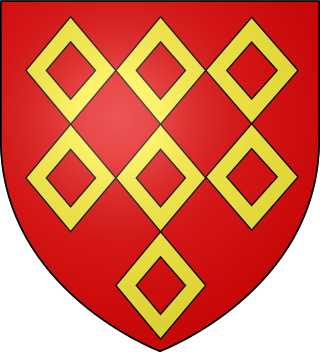
William Ferrers, 1st Baron Ferrers of Groby was an English peer who lived under two kings, Edward I and Edward II. His baronial caput was Groby in Leicestershire.

Sir Gilbert de Aton, 1st Baron Aton, of Ayton, Langdon, Malton and Wintringham, Yorkshire was a 13th-14th century English noble. He died c. 1342.

Sir William de Aton, 2nd Baron Aton, of Ayton and Malton Yorkshire was a 13th–14th century English noble. He died c. 1388.
Admiral Sir Robert Morley or Robert de Morley, 2nd Baron Morley, was an English Knight and naval officer who served as Admiral of the North four times from in the service of King Edward III.

John Lovel, 2nd Baron Lovel, Lord of Titchmarsh, was an English noble. He was killed during the Battle of Bannockburn against the Scots on 23 or 24 June 1314.
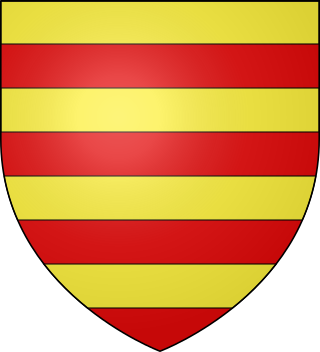
Hugh Poyntz, 1st Baron Poyntz, Lord of Curry Mallet was an English noble. He fought in the wars in Wales, Gascony and Scotland. He was a signatory of the Baron's Letter to Pope Boniface VIII in 1301.

Ralph de Grendon, 1st Baron Grendon, Lord of Grendon was an English noble. He served in the wars in Scotland and was a signatory of the Baron's Letter to Pope Boniface VIII in 1301.
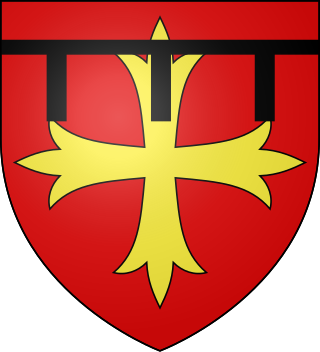
Thomas le Latimer, Lord of Braybrooke was an English noble. He served in English campaigns in France and Scotland.
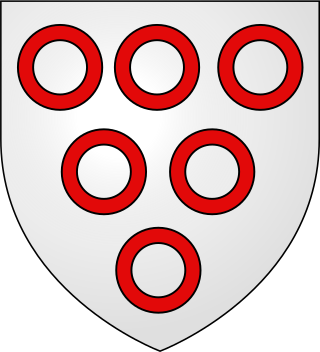
Hugh de Plessets, Lord of Hooknorton was an English noble. He served in English campaign in Scotland.